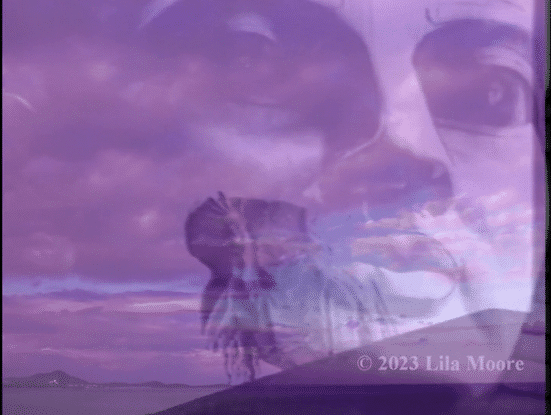Hermes Trismegistus has Arrived with Neo in 1999

Hermes Trismegistus has arrived in the academy in 1999 when Neo took the red pill, urging postmodern people to Wake-Up and reexamine their cultural narratives! The popular momentum of the Matrix film and media franchise coincided with the creation of the Centre for History of Hermetic Philosophy (HHP) of the University of Amsterdam, as explicated by the editors of the enlightening book: Hermes Explains.

Hermes Explains edited by Wouter J. Hanegrapaaff, Peter J. Forshaw and Marco Pasi. Published by Amsterdam University Press
Thirty years have passed, and as the editors state, this field of study gained academic legitimacy after its battle has been won or at least some major obstacles have been removed. However, the mythic Egyptian sage Hermes Trismegistus, who represents the field of research known as "Western esotericism," has still a lot of explaining to do, the editors assert in a somewhat playful tone.
Moreover, the editors declare that studying Western esotericism entails more than Western esotericism. It involves a critical reflection on ideas and theories that have not been integrated in previous eras into the study of the history of religions, philosophy, science and the arts. Studying Western esotericism, at this day and age, demands from us, like it forced Neo, to reconsider our assumptions about social reality and the world. We must be willing to accept or examine notions relating to the complex and profound dimensions of our existence.
It was, therefore, inspiring to participate in the 7th International Conference of the European Society for the Study of Western Esotericism, which was dedicated to the theme of Western Esotericism and Consciousness: Visions, Voices & Altered States. The conference took place at the Faculty of Humanities and Philosophy.
I was particularly drawn to researches that engage with the arts within the context of Western esotericism and will mention a few here.
Other topics were as fascinating such as Prof. Yulia Ustinova's keynote lecture about Ecstatic Wisdom in Ancient Greece. Ustinova is the author of Caves and the Ancient Greek Mind: Descending Underground in the Search for Ultimate Truth, published by Oxford University Press, and Divine Mania: Alteration of Consciousness in Ancient Greece, published by Routledge. See, a few slides from Prof. Ustinova's lecture:
Examples of esoteric practices in modern art were discussed by art-historian Caroline Lavender in her paper entitled: 'What cannot be expressed in words: Conveying visions in altered states of consciousness through art'. Lavender provided examples from the works of Georgiana Houghton, Hilma af Klint, Austin Osman Spare, Rosaleen Norton, and Ithell Colquhoun, amongst others. She differentiated between different categories of paintings produced through different modes of altered states and aesthetic techniques, i.e., Automatic Drawing, which is guided by a spirit, Trance Painting where the artist is producing work whilst in a trance-state, and Inspired Painting in which the artist's work is informed by visions previously experienced in altered-state. Intriguingly, it became to some extent apparent that artworks produced through the means of these three categories possess, and commonly share, a unique aesthetic quality. Although more research is required to substantiate such a claim, there may be certain processes and phenomena that, as Lavender implies, cannot be fully explained in words.

Massimo Introvigne, director of CESNUR, presented a paper entitled: The Spirits as Artists: Three Categories of "Spirit Art". He differentiated between artists that were inspired by Spiritualism and may be relevant to art-history but didn't produce 'spirit art' to works of art by mediums that allegedly appear on the canvas during séances without the mediation of human hands. A second similar category is spirits portraits produced by mediums, and a third category is works of art mainly painting, though sculpture and architecture are included, created by artists under the guidance of spirits. In this category we find artists that are regarded by art historians such as Hilma af Klint and Georgiana Houghton.

It is relevant to note that recent researches of the spiritual in art have triggered the reevaluation of women artists such as Ithell Colquhoun. Recently, the archive of Colquhoun's body of work comprised of some 5000 items was acquired by the Tate, hoping that the artist will finally get the credit and recognition she deserves as a major figure in British surrealism. Until now, Ithell Colquhoun's name was mainly associated with magic and the occult and very little attention was given to her innovative surrealist-esoteric style.
Hermes Trismegistus has also arrived in the cinema in many guises since the inception of the moving pictures medium. The research that I co-presented with my colleague Dr Marianna Ruah-Midbar Shapiro is based on our forthcoming book on The Emergent Contemporary Movement of Spiritual Cinema and Media. It demonstrates that shortly after the arrival of Neo and the Matrix phenomenon, a new movement of spiritual cinema and media has emerged. This new trend has negated dogmatic religious content, promoted contemporary spiritualities blended with shamanic, esoteric and mystical elements, and overall transformed the manners through which spiritually orientated films and media are made, distributed and watched. We are so accustomed to this neoteric 21st century film and media trend that we hardly recognise it. We also exemplified how emergent technologies extend the scope of cinema and enable artists and film-makers to provide viewers participatory agency so that they can experience directly the altered realms and visions associated with aboriginal, native-American and Amazonian ceremonies and worldviews. It is important to note that these cinematic experiences and projects were initiated by, and were done in full collaboration with, native shamanesses and shamans.
In the age of A.I. and learning machines, the symbolic figure of Hermes Trismegistus is both a reminder and a warning not to overlook Socrates' decree: Know Thyself as well as Plato's Cave that constantly question our perception of the matrix of reality and humanity.












